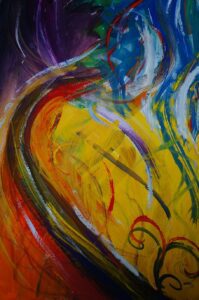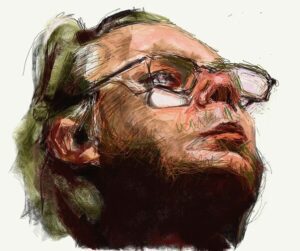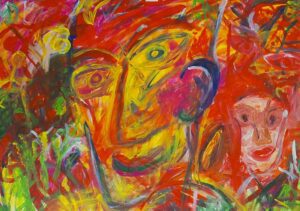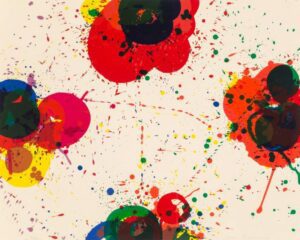Diving straight into the heart of post-war European art, we find Art Informel, a movement that broke free from traditional artistic standards.
It’s a term that encapsulates a variety of styles, all united by a desire for spontaneity and a rejection of geometric abstraction.
In this article, we’ll uncover the essence of Art Informel, exploring its origins, key figures, and the lasting impact it’s had on the contemporary art scene.
Get ready to jump into a world where expression triumphs over form, and emotion reigns supreme on the canvas.
Origins Of Art Informel
Beginning in the late 1940s, Art Informel emerged as a profound response to the devastation wrought by World War II.
Artists sought to express their individual experiences and emotions, abandoning the rigidity of planned compositions and precise forms.
The movement represented a collective yearning for freedom and authenticity in artistic expression, resonating deeply with an audience grappling with post-war realities.
Europe served as the fertile ground for Art Informel’s burgeoning growth, with each country contributing its unique flavor to the overarching movement.

While the term “Art Informel” was coined in Paris, the influence stretched across:
- France, where artists like Jean Dubuffet embraced raw, unrefined textures,
- Spain, where Antoni Tàpies utilized earthy materials and somber tones,
- Italy, where Lucio Fontana’s spatial concepts broke the two-dimensional barrier.
This era marked a crucial pivot from the structured aesthetic values of the early 20th century to a focus on the inner turmoil and chaos that defined the post-war atmosphere.
As a collective, our understanding of Art Informel is incomplete without recognizing the cultural and emotional landscape from which it sprang, painting an era with strokes of introspection and defiance against artistic norms.
Characteristics Of Art Informel
Art Informel, which bloomed in the heart of Europe’s mid-20th-century artistic ferment, possesses distinct characteristics that set it apart from other movements.
At its core, it rejects geometric abstraction in favor of spontaneous and gestural strokes, mirroring the artists’ inner emotions.
This form of abstract painting emphasizes the raw and the immediate, aiming to capture the intensity of the human experience.
Key features of Art Informel include:
- Expressiveness: The movement is known for its emphasis on conveying emotion through intense, expressive brushwork and texture.
- Spontaneity: Works are often the result of a rapid, impulsive process, showing a clear departure from premeditated designs.
- Non-figurative: Art Informel typically does not represent objects from reality, focusing instead on the abstract and the subjective.
The texture also played a pivotal role in Art Informel pieces, with artists often using thick layers of paint and found materials to create a tactile, dynamic surface.
Materials such as sand, tar, or plaster contributed to the innovative textural effects that became a hallmark of this movement.
Artist Jean Dubuffet explored the potential of unconventional materials in his compositions, which often evoke a sense of raw energy and primeval beauty.
Similarly, the work of Antoni Tàpies demonstrated how mixed media could be harnessed to reflect both a personal and a universal narrative, embedding objects like yarn and paper into his canvases.
The act of painting in Art Informel becomes a performance, with the canvas serving as a stage where the drama unfolds.
For filmmakers exploring the visual arts, the parallels between a dynamic Art Informel piece and the visceral impact of a powerful film scene are evident.
Just as each frame of a film holds the potential to evoke strong emotions, so too does each stroke on an Art Informel canvas.

Pioneers And Key Figures
The inception of Art Informel hinged on visionary artists who steered the movement into the cultural psyche of post-war Europe.

Jean Dubuffet, often celebrated as a father figure of this movement, captivated the art community with his raw and primitive approach to creativity.
His pivotal work, the series L’Hourloupe, is emblematic of the movement’s intent to disrupt traditional aesthetics.
Another towering figure is Wols, a German artist whose work is characterized by spontaneous and erratic brushwork.
Wols, born Alfred Otto Wolfgang Schulze, was instrumental in shaping the nascent stages of Art Informel.
His influence is notably present in his emblematic painting, The Battle of the Angels.
Amidst these pioneers, several key artists propelled Art Informel onto the world stage:
- Antoni Tàpies: a Spanish artist whose use of mixed media and unorthodox materials echoed the movement’s innovative spirit. His creations exemplify the textural intrigue at the heart of Art Informel.
- Alberto Burri: an Italian painter and sculptor who introduced unconventional materials like burlap and tar, reinforcing the movement’s dialogue with materiality and form.
The diverse backgrounds of these artists enriched Art Informel with a multitude of perspectives and creative methodologies.
Each artist’s unique contributions underlined the movement’s dedication to the pure act of creation – an act that exists beyond the confines of form and structure.
As we explore the essence of Art Informel, it’s essential to recognize how these figures shaped its course, leaving an enduring impact on the art world.

Art Informel Techniques And Styles
Within the wide spectrum of Art Informel, a variety of techniques and styles manifested, each blurring the line between conventional art and raw expression.
Artists like Jean Dubuffet embraced a technique known as Art Brut, reveling in spontaneous and unrefined creations.
This approach allowed forms to emerge organically, with heavy texture and an almost tactile quality that encouraged viewers to not only see but feel the artwork.
The style adopted by Wols, with his abstract and lyrical compositions, utilized a more fluid technique, with thin washes of paint creating a sense of depth and movement.
His artworks often resembled a cascade of emotions spilling onto the canvas, showcasing the powerful conveyance of interiority that is central to Art Informel.
These gestural strokes brought a kinetic energy to the pieces, offering a glimpse into the subconscious of the artist.
- Emphasis on Materials: Artists opted for non-traditional materials to add dimension and texture.
- Abstract Visual Language: Imagery shied away from realism, instead embracing shapes and forms born from impulse.
- Rejecting Composition Rules: Spatial relationships were disregarded, allowing elements to float freely within the art space.
Art Informel’s disregard for boundaries also ushered in an era where the process itself became a part of the art.
Alberto Burri’s experimental use of materials like burlap and tar revealed an affinity for unconventional substance over traditional mediums.
This experimentation pushed the envelope further, presenting new questions about the nature of art itself.
Similarly, Antoni Tàpies integrated materials such as marble dust and clay into his paintings, creating surfaces that are rugged yet instinctively relatable.
These methodologies embodied the essence of Art Informel—a quest for authenticity in an increasingly artificial world.
The movement collectively celebrated the rawness of human experience and its direct transmission onto canvas, paper, or any other surface that could hold the weight of an artist’s innermost thoughts and emotions.
Through their exploration, these artists expanded the vocabulary of modern art, influencing numerous movements and artists that followed.
Influence And Impact On Contemporary Art
Art Informel has had a profound influence on various art forms and continues to shape contemporary artistic endeavors.
Artists and movements that emerged in the latter half of the 20th century often cite Art Informel as a foundational influence, especially when discussing the freedom of expression that characterizes much of modern art.
This artistic movement extended its impact to the wider visual arts, influencing Performance Art and Conceptual Art.
Filmmaking too, saw a paradigm shift with directors incorporating the spontaneous and expressive techniques inspired by Art Informel.
This non-conformist approach prompted a new visual language in film, one that emphasizes raw emotion over strict narrative cohesion.
- Key Areas of Influence include: – Abstract Expressionism – Neo-Expressionism – Visual Storytelling in Film.
The absence of formal constraints and the embrace of unpredictability within Art Informel resonated deeply with the creative ethos of contemporary filmmakers.
They apply these principles to editing, cinematography, and narrative structures, crafting films that defy conventional storytelling methods.
These films often leave a lasting impact due to their innovative approach, making the audience feel rather than just witness.
Art Informel’s legacy is evident in the educational sphere as well, with art schools integrating its methodologies into their curricula.
Students are encouraged to explore materials and techniques that deviate from the norm, fostering an environment where originality and personal expression are
This movement’s spirit continues to inspire artists to challenge the status quo, allowing for a continually evolving landscape of creative expression.
What Is Art Informel – Wrap Up
We’ve explored the transformative power of Art Informel and its enduring legacy in the art world.
This movement has liberated artists from the constraints of classical aesthetics allowing them to express themselves through innovative materials and techniques.
It’s undeniable that Art Informel’s influence permeates modern artistic practices encouraging continual experimentation and redefining what art can be.
As we witness its principles echo in the works of contemporary creators we’re reminded of the movement’s significance in our ongoing dialogue with art and expression.
Frequently Asked Questions
What Is Art Informel?
Art Informel is an art movement that emphasizes abstract expression without traditional form or structure.
It involves spontaneous, gestural techniques and unconventional materials.
What Techniques Are Associated With Art Informel?
Art Informel is characterized by the use of non-traditional materials, embracing an abstract visual language, and rejecting standard composition rules.
Techniques often involve spontaneity and gestural applications.
Who Are Some Notable Artists Within The Art Informel Movement?
Prominent artists within the Art Informel movement include Alberto Burri and Antoni Tàpies, both of whom are known for their experimental use of materials.
How Did Art Informel Influence Contemporary Art?
Art Informel has influenced contemporary art by inspiring new forms like performance art, conceptual art, and visual storytelling in film.
It has encouraged artists to challenge conventional mediums and explore new creative techniques.
Does Art Informel Still Influence Artists Today?
Yes, Art Informel continues to inspire artists today, encouraging them to defy the art world’s status quo and experiment with new materials and methods in their work.


